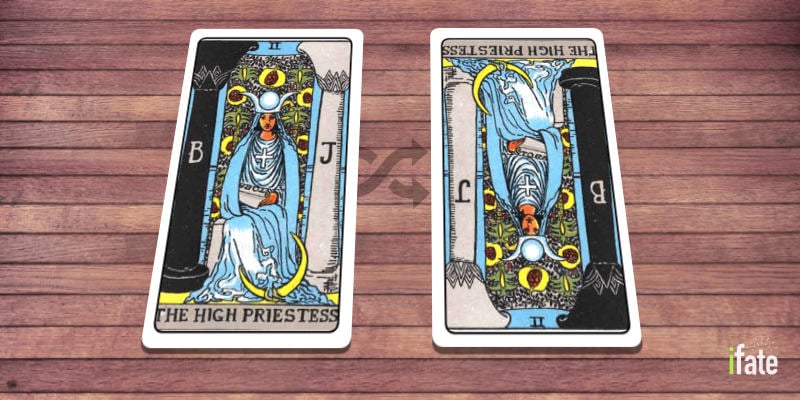Alright, so today I wanted to chat a bit about something that took me a while to get my head around when I first started messing with tarot cards: the whole upright versus reversed card thing. It’s one of those things that can seem super complicated at first, but like most stuff, it just takes a bit of time and figuring out what works for you.

My Early Days: Sticking to the Basics
When I first got my hands on a tarot deck, I was all about keeping it simple. I mean, there are 78 cards, and each one has its own story, right? That felt like plenty to learn. So, I did what a lot of beginners do: I only paid attention to the cards when they were right-side up. If a card accidentally landed upside down during a shuffle, I’d just dutifully flip it back over. My thinking was, “Let’s master the main meanings first before I dive into anything trickier.”
I spent a good amount of time just getting familiar with what each card generally represented in its upright position. I’d pull a card a day, look up its meaning in the little booklet that came with the deck, or browse some websites. It was all about building that foundational understanding. The Sun meant good times, the Ten of Swords meant things were rough – pretty straightforward.
The First Encounter with Reversals
Then, I started noticing in books or online forums that people were talking about “reversed” meanings. My first reaction was probably a bit of an eye-roll. “Great,” I thought, “as if learning 78 meanings wasn’t enough, now I have to learn another 78?” It felt overwhelming, and honestly, a bit unnecessary. I stuck to my upright-only readings for a while longer.
But the idea kept nagging at me. I’d do a reading for myself, and sometimes it felt like something was… missing. Like the cards were trying to tell me something a bit more nuanced, but my “upright only” rule was kind of boxing them in. I remember one specific reading where things just didn’t quite gel, and I had this gut feeling that the one card I’d flipped back over might have held a key if I’d let it speak from its upside-down position.
Taking the Plunge: Trying to Understand Reversed Cards
So, I decided to give it a go. My first attempts were clumsy. I tried the most common advice: “a reversed card means the opposite of its upright meaning.” Sometimes that worked, kind of. If the Empress upright was about nurturing and abundance, then reversed could be a lack of nurturing, or creative blocks. Okay, fair enough.

But it didn’t always feel right. Just making it “the opposite” felt too simplistic, too black and white. Tarot, to me, was starting to feel more about shades of grey. I started to dig deeper, reading different interpretations and, most importantly, just sitting with the cards and trying to feel what a reversed one might be saying in the context of a spread.
This is where things started to click for me. I stopped thinking of reversed cards as just “bad” or “negative” or “opposite.” Instead, I started to see them as energy that was perhaps:
- Blocked: The upright energy is there, but something is stopping it from flowing freely.
- Internalized: The energy is present but directed inwards, or it’s something happening on a subconscious level, not yet out in the open.
- Delayed: The upright meaning might still come to pass, but it’s taking its sweet time, or there are lessons to learn first.
- Needing attention: It could be highlighting an area that needs more focus or a different approach. Maybe I was overdoing the upright energy, or not doing enough of it.
- A subtler aspect: Sometimes it’s not a full-blown opposite, but a more nuanced or less obvious facet of the card’s upright theme.
How I See It Now: My Practical Take
So, what’s the difference for me, in my practice today? Well, when an upright card appears, I generally see its energy as more direct, more outward, more clearly manifesting in the situation. It’s the card speaking in its most straightforward voice.
When a reversed card shows up, it’s like a little nudge to look closer. It’s not automatically a “bad” thing. For instance, a reversed Lovers card doesn’t always mean a breakup. It could mean I need to look at my internal relationship with myself, or that there’s a misalignment in values within a partnership that needs addressing, rather than the harmonious union the upright Lovers might suggest. A reversed Nine of Pentacles might not mean total financial ruin, but perhaps a feeling of being unfulfilled despite material comfort, or that I’m relying too much on external validation instead of appreciating my own independence (which the upright often points to).
I found that thinking of reversed cards as having “too much” or “too little” of the upright energy was also super helpful. Like, the Chariot upright is all about willpower and drive. Reversed, it could mean I’m being way too forceful and bull-headed, or completely lacking direction and motivation.

It’s really about context and intuition. For me, reversals add depth. They don’t just negate the upright meaning; they add layers, they ask more questions, they often point to the internal work or the less obvious dynamics at play. It’s less about a completely different meaning and more about a different expression or experience of that card’s core energy.
Honestly, it was a bit of a journey to get comfortable with them. I went from ignoring them, to being confused by them, to finally seeing them as valuable messengers. And you know what? My readings feel much richer for it. It’s like going from watching a movie in black and white to seeing it in full color with surround sound. Just adds a whole lot more to the story.